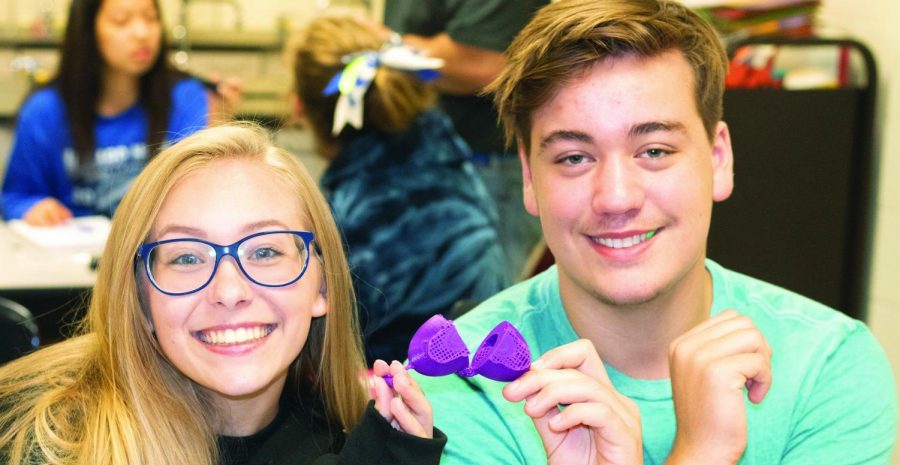Dreams with dimensions
3D printers provide innovative ways for students to learn
Bursts of giggles and scoffs of disbelief echo off the walls of the classroom. Pieces of slightly deformed, multicolored plastic are strewn across the black lab tables.
Mr. Pearson walks through the aisles commenting on the students’ projects. “How is your plastic box going?” he questions, approaching juniors Alice Young and Addison Williams.
“It was supposed to have doors, and it was supposed to be so cool,” Young sighed, staring down at her protein transport.
“That’s fine. If it’s a failure, that’s okay,” Mr. Pearson replied.
Young looked up in disbelief, “But what about extra credit?”
For science department head Tyler Pearson’s AP Biology students, it was their first time getting their hands on 3D printing technology. The classes designed models of transport proteins, helping them better picture how they move through the membrane of a cell.
“In a cell membrane, there’s protein, but all we see are flat cut-outs in books,” Pearson said.
The students used an online software to design the models, and with the help of library staff, they brought their creations to life.
“There was an online program to create our design that was fairly easy to use,” Young said.
However, the design aspect wasn’t the greatest challenge this project posed for most students. Upon receiving their designs, many students spent time poking out extra pieces of melted plastic in order to perfect their creations.
“Our design is really cool, except we had to poke a lot of holes in it. I’m violently poking plastic,” Young said.
Nevertheless, their project was anything but a failure, serving as an enriching learning tool for all students.
“This was so cool because it felt so practical. I could apply it to what I already learned. This is definitely the coolest project I’ve ever done in a class,” Young said.
Other students echo Young’s statements and believe the advanced technology enhanced their learning experience.
“The 3D printers allow us to make our labs more interactive. We are able to get hands-on experience using our models,” sophomore Chaitra Pirisingula said.
With more printing underway, the library staff hopes to be involved with more classes and independent projects.
“This is how we envision incorporating Makerspace into our library. 3D printers have applications across a wide variety of fields,” library assistant Noelle Weigel said.
Printing is not exclusive to just class projects. For students with independent projects in mind, the 3D printing process is fairly simple.
“3D printers have relevance to everyone’s futures,” Weigel said.
And who knows? Maybe you’ll be the first to print something absolutely mindblowing, after a few failures of course.


